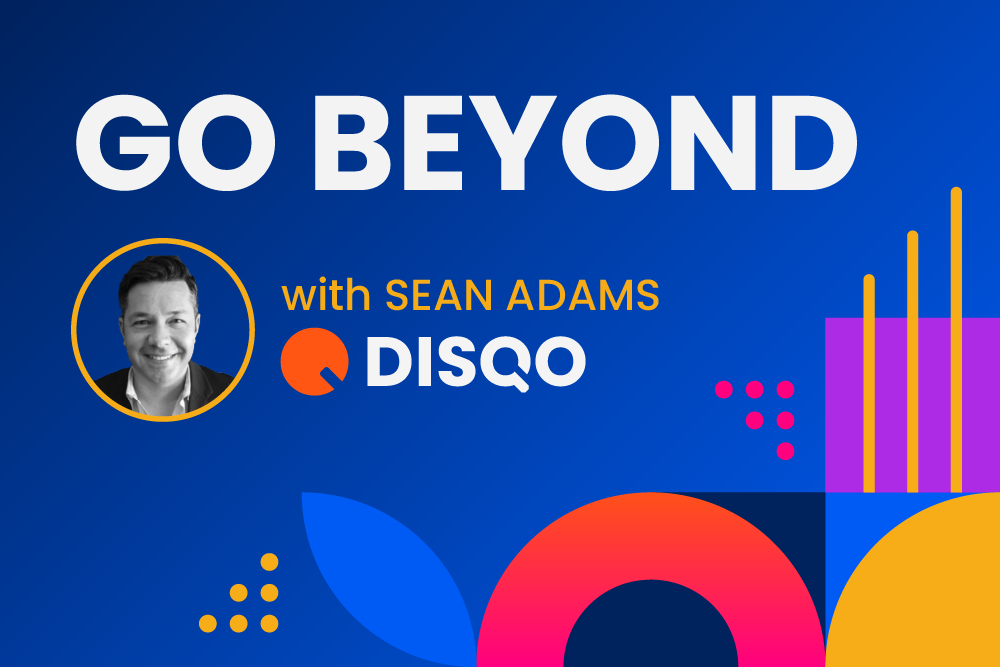A smarter way to benchmark advertising performance across every platform, tactic, and KPI
When you’re under pressure to prove that every media dollar is working, benchmarks aren’t just helpful; they’re essential. But not all benchmarks are created equal. During a recent eMarketer Tech-Talk Webinar, Sean Adams, DISQO’s SVP of Ad Measurement, broke down what makes benchmarks meaningful in today’s cross-platform world—and how brands can apply them to measure what matters most.
DISQO’s benchmarks are powered by deterministic, identity-based data collected directly from more than 30 million opted-in consumers across digital, social, CTV, and linear channels. By eliminating reliance on cookies or modeled assumptions, we offer a single-source view of advertising impact, from brand sentiment to behavioral outcomes like search, site visits, and e-commerce activity.
So why do benchmarks matter now more than ever? According to Sean, they allow marketers to set realistic goals, measure success with context, and optimize strategies over time. That continuous feedback loop helps move from guesswork to decision-making with confidence, especially in a fragmented, high-stakes media environment.
But the key is context. To be truly useful, benchmarks should reflect your brand’s category, channel mix, and maturity stage. DISQO’s latest benchmarks cover eight brand lift and nine outcome lift metrics, based on over 1,650 campaigns since 2021. That includes recent data across 25 industries and deeper cuts by demographic, digital platform, and media channel.
Q&A with Sean Adams: Turning Benchmarks Into Smarter Performance Media Decisions
Q: With so many benchmarks available, how should marketers determine which ones are truly credible and relevant?
Start by making sure your advertising benchmarks reflect your campaign reality. That means narrowing beyond broad averages to focus on benchmarks that align with your industry, target audience, and channel mix. For example, a Gen Z retail campaign on social media will behave differently than a CPG brand running across CTV. Your benchmarks should reflect those differences. They should also match your objectives. If you’re building brand equity, you need full-funnel benchmarks, not just lower-funnel outcomes. The best benchmarks are granular, cross-platform, and rooted in diverse, current datasets.
Q: What if your campaign performs above or below the benchmark? How should that be interpreted?
Benchmarks are a guide, not a verdict. If your results are off the mark, first check whether you’re comparing against the right peer set. A mismatch in brand maturity, channel, or objective can make performance seem better or worse than it really is. That said, if performance is meaningfully different from expectations, dig in. Especially if results are underperforming, it’s an opportunity to optimize mid-flight. We work with agency partners to do just that, using benchmarks to spot issues early and take action.
Q: How should marketers use benchmarks beyond validation? What does optimization look like?
Benchmarks should be a launchpad, not a finish line. The goal isn’t just to hit the average but to improve over time. By consistently measuring campaigns and comparing them against relevant benchmarks, you can identify what’s working and iterate. That might mean reallocating spend to stronger-performing channels, refining audience targeting, or adjusting creative based on lift by exposure frequency. It’s all about using benchmarks as directional signals to drive better decisions.
Q: Do you have an example of how a brand has applied this in a real campaign?
Yes. Havas Media Network used DISQO benchmarks during a holiday campaign for Josh Cellars wine. The campaign drove strong mid-funnel lifts in favorability and consideration, even more than awareness. Those insights helped the team refine targeting and shift media dollars toward high-performing channels like CTV. They also found that ad frequency beyond six exposures showed diminishing returns, which helped them balance reach and avoid waste. All of this happened mid-campaign, not just in post-campaign reporting.
Q: Cross-platform measurement is clearly important. Why is that such a critical part of benchmarking media performance today?
Because consumers don’t experience ads in silos, and you can’t measure performance in silos either. At DISQO, we can see exposure and behaviors across platforms, including TV, CTV, social, and digital, because our panelists opt in to share their digital journeys. That means we can connect what people saw with what they did—like search, visit, or purchase—no matter where the ad ran. This allows us to provide truly deterministic, cross-platform insights that make benchmarks actionable.
Q: What are the biggest pitfalls brands should avoid when interpreting lift metrics?
One big mistake is ignoring context. A one-point lift might be huge for an established brand with high baseline awareness. But for a new brand, it might signal underperformance. Another pitfall is comparing lift across platforms without considering how each one contributes to the funnel. Some channels drive awareness, others drive conversion. That doesn’t make one better than another, it just means they play different roles. Finally, lift alone isn’t enough. You need to factor in creative quality, exposure frequency, and media context.
Q: How do brand maturity levels impact what marketers should expect from their benchmarks?
New brands tend to see the biggest lifts in awareness because they’re starting from a low base. For them, the focus should be on building recognition. Mid-funnel metrics come after. Established brands usually have strong unaided awareness already, so the goal shifts to conversion and loyalty. That’s where measurement has to evolve. For mature brands, the metrics that matter are site visits, search behavior, and purchase intent.
Q: Should campaign objectives shift as brands mature?
Absolutely. When you’re just getting started, awareness is the priority. But as you grow, it’s not enough to be known, you have to drive action. That means your measurement approach needs to evolve, too. You need a partner who can track performance across the funnel and across channels, so you’re not stitching together siloed data. Campaigns are getting more complex, and your measurement should match that.
Q: Can you share an example of how mid-funnel brand-building can impact performance outcomes?
We worked on a podcast ad campaign with an audio platform and their retail client. It was focused on favorability and consideration, but it also drove a 47% lift in branded search and a 57% lift in site visits. That’s mid-funnel messaging driving lower-funnel action. Here, the takeaway was clear: brand and performance are connected. And when you measure across the funnel, you can see exactly how brand-building contributes to business outcomes.
Q: How should marketers structure their learning agenda to connect brand metrics with behavioral outcomes?
Treat every campaign like an experiment. Start with questions tied to your business goals, like which creatives drive more favorability or which channels convert awareness to purchase intent. Then build a measurement plan that captures those answers in real time. When you do that consistently, you create a feedback loop between brand and performance that helps you optimize over time. That’s what always-on measurement is all about.
Q: Looking ahead, what’s one shift marketers need to make in how they plan and measure advertising effectiveness?
Embrace resilience through measurement. The environment is volatile, AI is changing fast, cookies are deprecating, and economic uncertainty is always looming. The brands that will succeed are the ones using comprehensive, cross-platform measurement to see what’s working and make smarter decisions in real time. And that means investing in people-based, consented solutions that don’t rely on outdated identifiers.
Benchmark your campaigns: See how you compare
Curious how the last campaign you ran stacks up to industry benchmarks?
Get your copy of DISQO’s 2025 benchmark reports for answers here:
- 2025 Advertising Effectiveness Benchmarks
- 2025 Social Media Benchmarks
- 2025 CTV Ad Effectiveness Benchmarks
Want more info on measuring what matters—every channel, one source? Get in touch. Let’s talk. hello@disqo.com



.png?width=352&name=Night%201%20(2).png)

